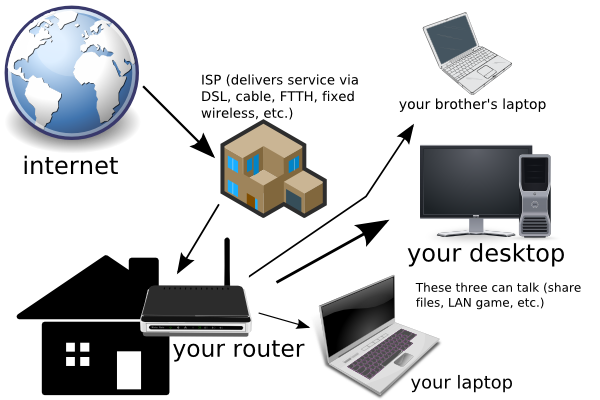A basic outline of what wireless means in relation to an internet connection.
It could really refer to one of three things:
Mobile broadband – broadband service delivered over a cellular network
Service from a WISP (wireless internet service provider) – the ISP delivers internet usually via some line of sight wireless technology. Somewhat more common in rural, elsewise underserved areas.
A wireless router providing an internet connection to devices – probably all types of broadband can be used via a wireless router. (Well, except gigabit service. There’s no wireless router with enough bandwidth for that.) The router allows devices (laptops, desktops, an iPod Touch, etc.) to connection wirelessly to the LAN and also provides internet if the router is connected. Wireless routers also usually have several wired Ethernet ports.
Some confusion may be had getting service from a WISP and running a wireless router. You have wireless (from the WISP) and wireless (a router running). But remember, you can also run a wireless router with other types of service: DSL, cable, FTTH, etc. In fact, you don’t even need an internet connection to run a wireless router. Once again, it forms a LAN (Local Area Network: a network of local devices, local being ones connected to this router) and provides an internet connection to these devices if there is one.
There are also wired (only) routers that perform much the same function, but may only be connected to with an Ethernet cable. Wireless is probably more common, at least in homes, because of it’s convenience (wiring a house is often much more difficult).
So that’s pretty much what wireless means.
This is the first in a planned series of tech posts directed at laymen, non-geeks, etc. Basically a lot of my friends and family. Subscribe and enjoy.
Illustration built with images from OpenClipArt.

Comments are disabled for this post